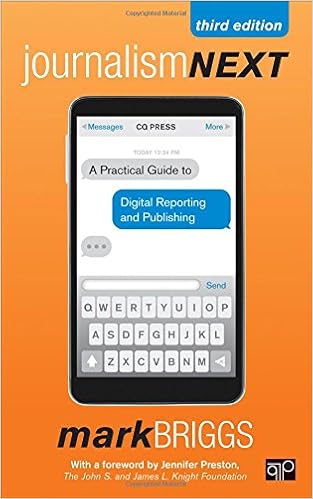Editor’s note: Matt Neznanski (right) is today’s guest writer. You can read more about – and from – Matt on his site.
How many reporter’s meetings have you attended where every suggestion to use new technology or different ways to tell stories is met with resistance based on gut feelings about what readers want?
If you’re honest, a lot. Most, even.
That kind of decision-making isn’t very effective and can stifle new ideas since it’s hard to argue with common sense and long-held newsroom ideas about what people want or need from their local news.
But while newspapers have always had to resort to best guesses using subscription or single-copy sales numbers (or make decisions based on the squeaky wheels in the letters to the editor), online readers make their presence known by being counted and tracked whenever they land on your site.
So why not make data a bigger part of news meetings to base decisions on what we see readers actually doing?
Most news organizations don’t do much with available data. Sure, we track page views, bounce rates, time on site and pages per visit numbers, mostly as a tool to sell advertising. But those numbers don’t always tell a tale that newsrooms can use. A few tweaks to Web data reports, however, could help return a lot better data and inform more effective online news coverage.
Joe Murphy, senior Web developer at the Denver Post, suggests a few queries that go miles beyond the skimpy stuff of most newsroom Web traffic reports:
- What non-branded search terms are readers using to find our site content?
- What’s the return frequency of our local audience?
- Which sections (news / sports / business / entertainment) have the highest percentage of visits from local readers?
- What’s the bounce rate among visitors who enter at articles? Does that change based on the section the article’s in?
- What’s your homepage bounce rate among visitors who arrived at your homepage for the first time today? What’s the rate among visitors who have already visited your homepage today?
Is there a trend toward a type of coverage that isn’t obvious in how your beats are arranged? Use the data to shake things up.
- Is there something you could reduce or eliminate to better focus your online content? Newsrooms are notorious for never quitting anything. Here’s your chance to weed stuff out.
- See how people find your content and make sure your articles are categorized and tagged to provide search visitors with more relevant items (and a better reason to stick around or return).
- Investigate how readers find your content. A lot of newsies are stuck on the index page. You’ll likely find that more people come in sideways — directly to individual articles — even your most loyal readers.
- Bounce rates on return visitors can help you explain the importance of keeping the news fresh and timely throughout the day. Show reporters that readers are there looking for new items to motivate them to post all day long.
Most Web metrics software can provide data like this. Sometimes they just need a little coaxing and creative custom reporting. So once you’re getting better data, what do you do with the results?
Spend some time looking at what local readers are responding to:
Better data and a more engaged newsroom is all part of developing a more cohesive, more effective strategy for meeting and exceeding reader expectations. I’ll bet your more focused queries would be of interest to ad sales, too.
Have more ideas about how to use this data or tricks on getting metrics reports to behave? Let us know in the comments.

 Mark Briggs
Mark Briggs  Posted in
Posted in  Tags:
Tags: 





The law enforcement section in Tucson, Ariz. has launched raw video clip footage from the camera law enforcement officer Joel Mann was wearing when he brutally pummeled a feminine scholar who was going for walks innocuously just from the campus in the College of Arizona.